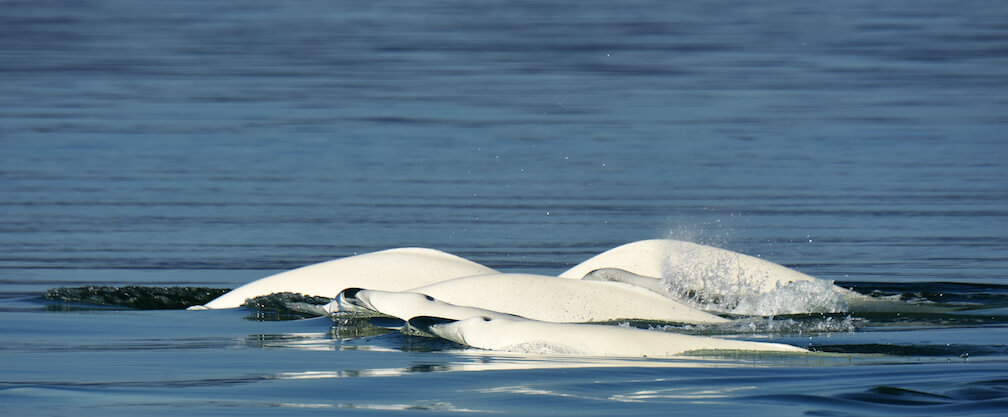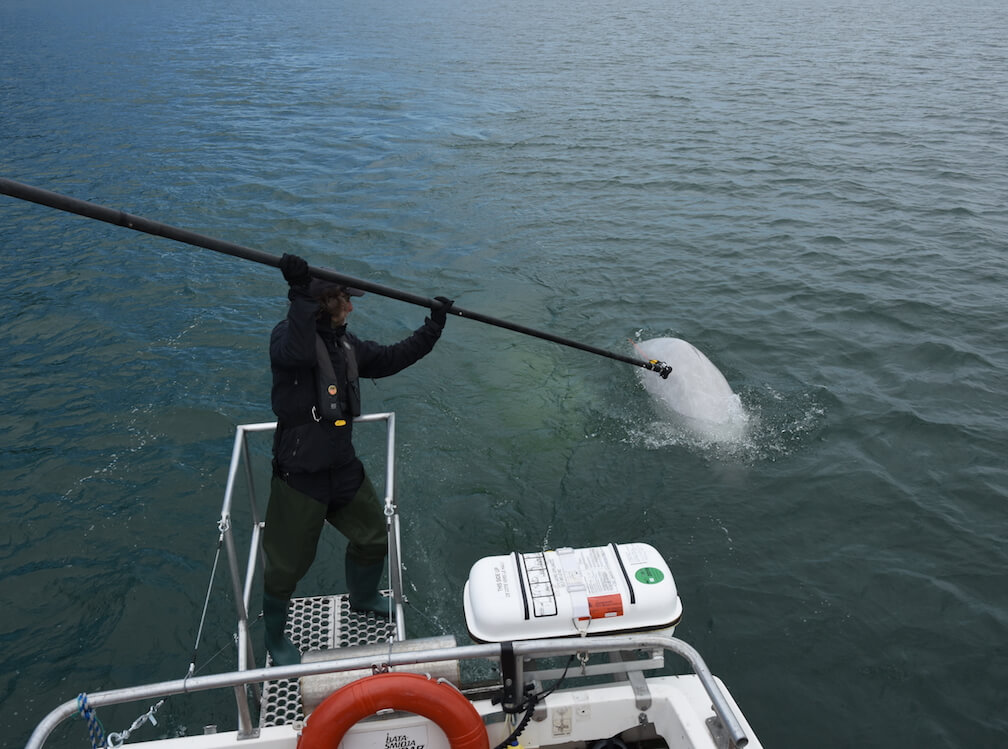This year, GREMM’s (Group for Research and Education on Marine Mammals) season of field research kicked off on June 15. On board the Bleuvet, the organization’s main research vessel, the crew was reduced to the bare minimum in order to comply with public health measures to prevent the spread of COVID-19.
The team’s first project of the season entails fitting belugas with data archivers. GREMM is participating in the data collection aspect of this project led by Fisheries and Oceans Canada researcher Véronique Lesage. The specialized tags enable scientists to record the sounds emitted by the beluga wearing it, sounds received, as well as the animal’s depth, angle, speed, etc. The project will be carried out in the field every other week throughout the summer.
Season debut: A mixed bag
“This is the worst two weeks since the start of the project three years ago,” deplores lead technician and tagging expert Michel Moisan. Alternating fog and strong winds shortened the work days on the water or prevented them from taking place altogether. When the crew did finally set sail, the belugas were nowhere to be found. And, when at last the Bleuvet managed to approach a herd, the belugas were not cooperative.
“Our ability to tag is dependent on a number of factors: the make-up of the herd we are approaching, what kind of mood the belugas are in, what they are doing. In order to be able to get close enough, the belugas must be calm and swimming in tight formation. Above all, we mustn’t force the approach,” explains Michel Moisan.
Even if, much to the team’s dismay, no belugas have been tagged yet, photo-identification continues its course. The cornerstone of GREMM’s research projects, photo-ID work adds individual depth to the data. The markings, spots and scars that characterize the belugas’ white backs allow “matchmakers” to distinguish one individual from another.
Another highlight to the start of summer: the team was able to photograph two newborns. The calving season is well underway!
Preliminary IDs since June 15:
- Annakpok (adopted by Groupe CSL)
- Candy C (adopted by Tiffany Chamandy et Matthew McMillan)
- John A. Macdonald (adopted by Fairmont Hotel Macdonald)
- Miss Frontenac (adopted by Fairmount le Château Frontenac)
- Pascolio (adopted by Tadoussac business owners)
Preliminary IDs consist of quickly scanning all photos in order to identify some of them at first glance.






